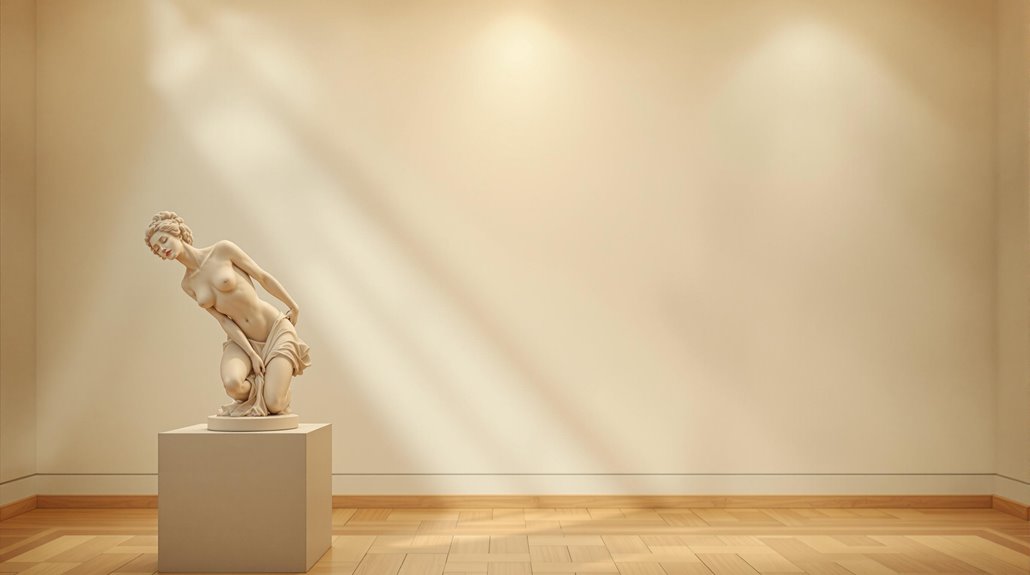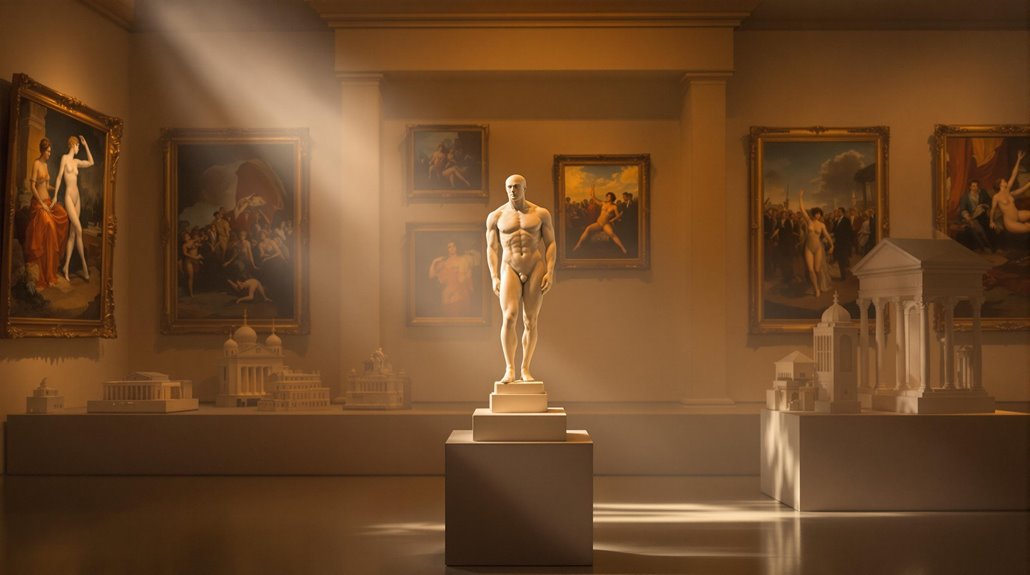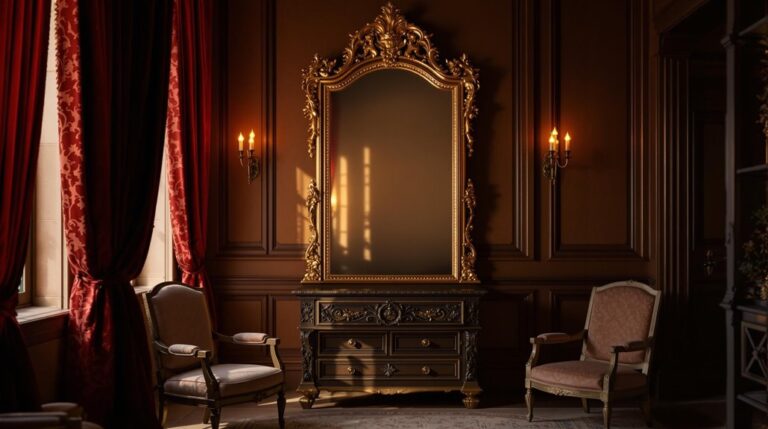The Olympics Once Awarded Medals for Art
You know about Olympic athletes earning medals for physical prowess, but you've probably never heard about artists competing for gold at the same games. From 1912 to 1948, painters, sculptors, architects, writers, and musicians faced off in Olympic competitions just like swimmers and runners. Baron Pierre de Coubertin, the founder of the modern Olympics, believed that true athletic excellence couldn't exist without artistic achievement. What followed was a fascinating experiment that would reshape Olympic history.
The Visionary Behind Olympic Art Competitions
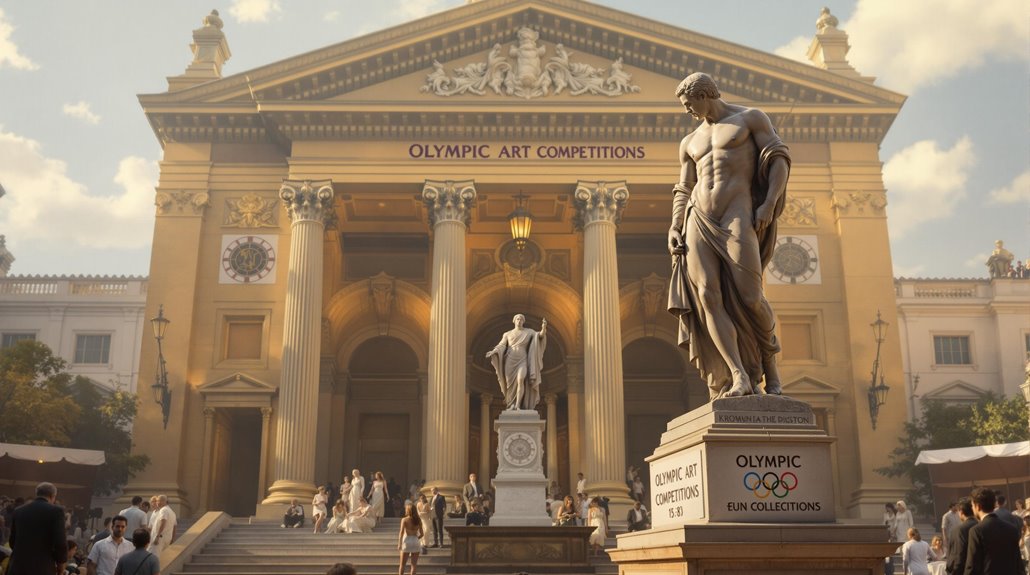
One man's unwavering vision transformed the modern Olympics into more than just a sporting event.
Baron Pierre de Coubertin, the founder of the modern Games, believed you couldn't separate athletic excellence from artistic achievement. His Olympism Philosophy championed the marriage of both physical and intellectual pursuits, drawing inspiration from ancient Greek ideals.
Coubertin's ideals went beyond typical sporting competitions. He envisioned an Olympic celebration that would showcase humanity's full potential, making art competitions an essential component of the Games. Artists from across the globe submitted works in five main categories, including architecture, literature, music, painting, and sculpture. Each entry had to be inspired by sport, reflecting the dynamic connection between athleticism and artistry.
When he first proposed this revolutionary concept in 1906, you might've thought it was far-fetched, but he persisted. Despite initial resistance, his determination paid off in 1912 when Stockholm hosted the first Olympic art competitions, where he secretly won gold in literature under assumed names.
From Canvas to Medal: Art Categories Explained
While many know the Olympics for its athletic achievements, the Games once celebrated artistic excellence through a diverse range of creative categories.
You'd find competitions in painting, sculpture, architecture, literature, and music, with each category evolving over time to become more specialized.
The competition evolution was particularly noticeable in painting, which started as a single category in 1912 before branching into various subcategories like watercolors, drawings, and graphic arts.
All artworks needed artistic inspiration from sports, whether you were composing music, writing poetry, or creating sculptures.
Architecture even expanded to include town planning by 1928.
The categories were structured to recognize different artistic approaches, allowing artists to submit multiple works across different divisions.
However, judges weren't obligated to award medals if entries didn't meet Olympic standards.
Participation reached its pinnacle in 1928 when over 1,000 artworks were submitted for consideration.
The first Olympic art competitions in Stockholm in 1912 had a modest beginning with only 35 artists participating.
Notable Artists Who Struck Olympic Gold
Among the most fascinating Olympic stories are those of artists who proved excellence knows no boundaries, crossing between athletic and artistic achievements.
Walter Winans exemplified this versatility, winning medals in both sculpture and shooting, while Alfred Hajos mastered swimming and architecture to claim Olympic glory in both fields.
Artists showcased their medal-winning artistic techniques across various disciplines. He earned recognition for his design of the Yale's Payne Whitney Gymnasium.
Jean Jacoby dominated painting with two consecutive golds, while Alex Diggelmann's graphic arts earned him a complete set of medals.
You'll find Pierre de Coubertin's contribution particularly remarkable – the Olympics' founder won gold for his poem "Ode to Sport."
The competitions also celebrated diversity in achievement, from Aale Tynni becoming the only female art gold medalist to John Copley setting a record as the oldest Olympic medalist at 73.
This artistic era of the Olympics stands in stark contrast to today's games, where athletes like Michael Phelps have earned their places in history through pure athletic achievement.
The Rise and Fall of Creative Competition
The artistic competitions at the Olympics began with a bold vision from Pierre de Coubertin, who believed the Games should celebrate both physical and intellectual excellence.
When first implemented at the 1912 Stockholm Olympics, the competitions quickly gained cultural significance, growing from just 35 artists to 1,100 participants by 1928.
The artistic influence peaked in 1932, with 384,000 visitors viewing submissions at the Los Angeles Games.
You'd find categories spanning architecture, literature, music, painting, and sculpture. One notable winner was Wassily Kandinsky's gold in the 1928 abstract painting category. The competitions marked a significant achievement for women artists, as eleven female medalists earned recognition throughout the program's history.
However, challenges emerged around judging criteria and concerns over professionalism.
The subjective nature of art made it difficult to award medals consistently.
Artistic Legacy in Modern Olympics
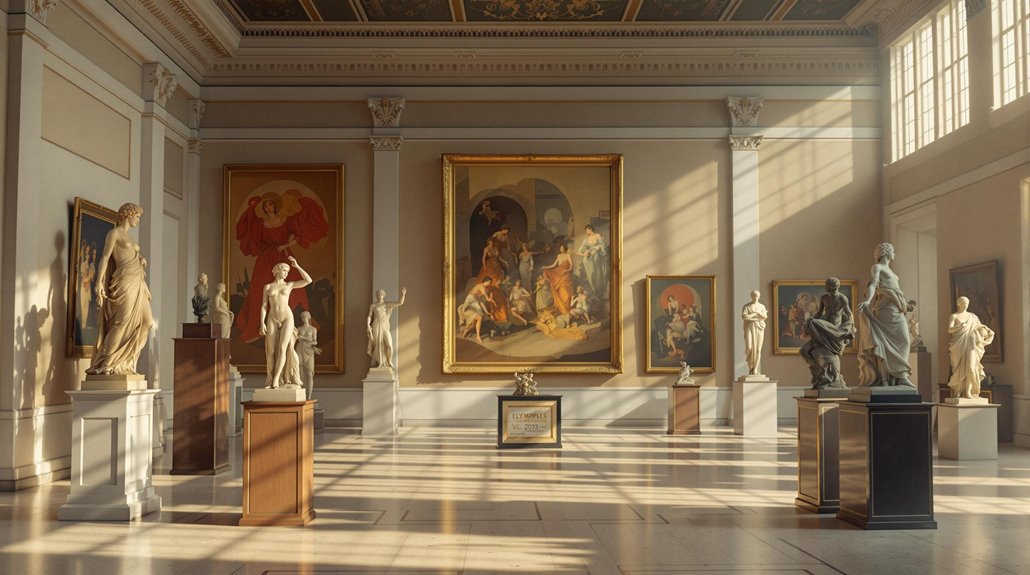
Modern Olympic Games preserve their artistic heritage through four major initiatives: the Cultural Olympiad, Olympic Arts Festival, museum programs, and integrated artistic elements.
You'll find the artistic evolution of the Olympics most visible in the Cultural Olympiad, a four-year program showcasing the host country's creative achievements and fostering international exchange. This tradition echoes the ancient Games where poets and philosophers gathered to share their works.

